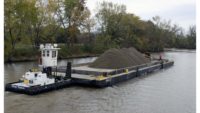In the days leading up to the Nov. 30 opening of COP28, the United Nations international climate conference, doubts swirled about how much would be accomplished given the announced absence this year of President Biden, as well as media reports of plans by host country the United Arab Emirates, to discuss natural gas deals ahead of the summit.
However, on the first day of the meeting, held this year in Dubai, United Arab Emirates, participating nations announced they had reached an agreement on how to finance the Loss and Damage fund established at last year's meeting.
COP27 ended last year with wealthy nations agreeing to language that established the fund to help developing countries plan for and rebuild after climate-change related disasters, but at an impasse on how to pay for it.
Initial funding commitments made this year from the U.S., Germany, U.K., European Union, Japan and UAE total more than $420 million, well above the $200-million required commitment, said COP28 President Sultan Al Jaber in the opening press conference. He also is CEO of Abu Dhabi National Oil Co.
“Governments and their negotiators must use this momentum to deliver truly ambitious outcomes here in Dubai,” said UN Climate Change Executive Secretary Simon Stiell.
The Loss and Damage fund provides countries that are most vulnerable to impacts of climate change but which produce the fewest greenhouse gas emissions access to financing for mitigation and adaptation efforts, as well as for damage that has already occurred—paid for by countries and entities that produce some of the largest greenhouse gas emissions.
Many groups welcomed the announcement but signaled that contributions must continue given the current and expected financial losses borne by nations threatened by climate change, and to speed construction and reconstruction efforts.
“Low- and middle-income nations are suffering from billions of dollars of damage and an immense human toll from increasingly severe climate impacts," said Rachel Cleetus, policy director and lead economist for the Climate and Energy Program at the Union of Concerned Scientists, in a statement. "Richer nations must now ensure [the fund is] well-resourced to meet the needs of those on the frontlines of the climate crisis."
In 2020, mitigation and adaptation financing going to developing countries was “at least $17 billion short of the $100 billion pledged to developing countries, even by climate finance providers' own accounting,” according to the 2022 Adaptation Gap Report by the UN Environment Programme, citing a five- to ten-fold gap between estimated adaptation costs and financing from 2022 to the end of the decade.
“The success of this fund will depend on the speed and scale at which funds start flowing to people in need. We call on world leaders to announce substantial contributions at COP28—not only to cover start-up costs but also to fill the fund itself,” said World Resources Institute President and CEO Ani Dasgupta, putting the figure for expected climate-change related damage in those countries at $580 billion by 2030.
More financing and funding commitments came in the following days. These include a Dec. 1 announcement by the World Bank Group—which will initially be the home of the Loss and Damage fund—that 45% of its financing, about $40 billion, will go toward “climate-related projects,” including for resilience and adaptation in its fiscal year from July 1, 2024 to June 30, 2025. This represents an increase of about $9 billion, with Its current annual financing average at 36.3%.
The Accelerated Partnership for Renewables in Africa also announced a collaboration on financing, capacity building and technical support to advance the growth of renewable energy in African nations, while Bill Gates' Breakthrough Energy Catalyst is investing up to $38 million toward a partnership with the EU to finance a battery storage project in Italy that will use a liquid-carbon dioxide system to store excess wind and solar energy.
.jpg?1701656833)




Post a comment to this article
Report Abusive Comment